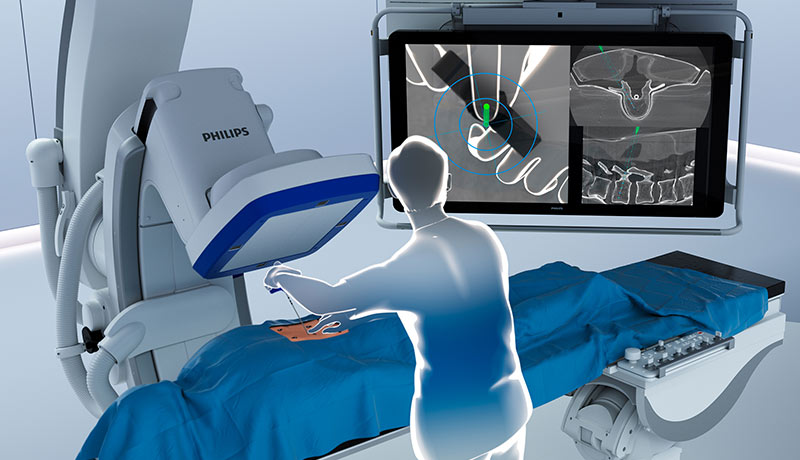
Royal Philips introduced ClarifEye Augmented Reality Surgical Navigation, an industry-first solution to advance minimally-invasive spine procedures in the Hybrid Operating Room, such as Philips’ Hybrid Suite. By combining superb 2D and 3D visualizations at low X-ray dose [3] with 3D augmented reality (AR), the unique solution provides live intra-operative visual feedback to support accurate placement of pedicle screws during spinal fusion procedures. During such procedures, two or more vertebrae in the spine are permanently connected to help improve stability, correct a deformity, or reduce pain. The solution is fully integrated into the Philips Azurion image-guided therapy platform, supporting efficient workflow with intra-procedural navigation and verification for accurate screw placement and reducing the need for post-operative CT scans.
Vincenzo Ventricelli, CEO, Philips Middle East, Turkey and Africa said, “Knowing the challenges you face and where changes in healthcare and technology impact your ability to deliver high quality patient care is the key to all Philips’ solutions. Our solutions are designed to help make healthcare delivery more efficient and effective, hence this industry-first image-guided therapy combines imaging and augmented reality navigation into one system in the Hybrid Operating Room – building on Philips’ already strong foundation in imaging.”
Spine conditions can have a significant impact on quality of life and well-being, with severe cases leaving patients unable to walk or even move from their beds. Treatment is typically complex and delicate, with surgeons required to take particular care to avoid fragile neurological and vascular structures that are close to the spine. By taking a minimally invasive approach to spine surgery, patients can benefit from reduced postoperative pain, shortened hospital stays, reduced blood loss, and minimized soft tissue damage and scar tissue [4]. In addition, the intra-operative image guidance provided by solutions such as ClarifEye increases clinical accuracy, with patients subject to fewer revision surgeries compared to the current standard of care [1,2].
“In spine surgery, when you change your approach to a minimally invasive one, you also have to change the way you operate because you need another way to see inside the spine,” said Dr. Pietro Scarone, Neurosurgeon at Ente Ospedaliero Cantonale in Lugano, Switzerland. “With ClarifEye, the technology adapts to the needs of the surgeon, rather than the surgeon adapting to the requirements of the technology.”
Four high-resolution optical cameras are used to augment the surgical field with 3D cone-beam CT imaging, without the need for additional X-ray. The system combines the view of the surgical field with the internal 3D view of the patient to construct a 3D augmented-reality view of the patient’s external and internal anatomy. Consistent tracking of the patient is ensured by video tracking of non-invasive markers placed on the skin. The system then visualizes the tip of the ClarifEye Needle as it is navigated along the planned path in the spine.
